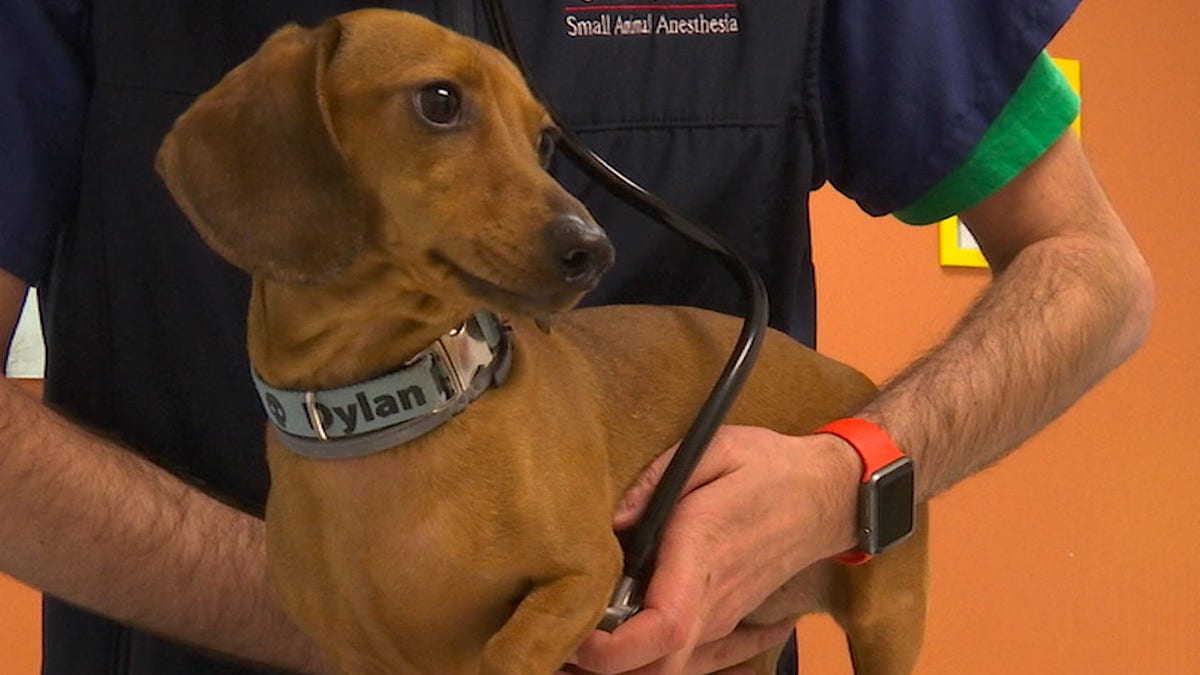
A new study reveals that canines are able to understand basic human speech with physical objects that are associated with them. (Fox News)
If you've ever wondered how your dog is always a good boy, a new study may provide the answer.
The study, published in the journal Frontiers in Neuroscience, intimates that canines are able to understand basic human speech with physical objects that are associated with them. Think toys, food or physical objects that have been repeated until dogs were able to understand.
“Many dog owners think that their dogs know what some words mean, but there really isn’t much scientific evidence to support that,” Ashley Prichard, a Ph.D. candidate in Emory’s Department of Psychology and first author of the study, said in a statement. “We wanted to get data from the dogs themselves — not just owner reports.”
IS YOUR DOG SUPER SMART? NO, LOL
“We know that dogs have the capacity to process at least some aspects of human language since they can learn to follow verbal commands,” Emory neuroscientist Gregory Berns, senior author of the study, added. “Previous research, however, suggests dogs may rely on many other cues to follow a verbal command, such as gaze, gestures and even emotional expressions from their owners.”
The researchers trained 12 dogs of different breeds (including a golden retriever-labrador mix) to "retrieve two objects based on object names, then probed the neural basis for these auditory discriminations using awake-fMRI," according to the study's abstract.
From there, researchers took objects of different textures, such as a soft toy and a squeaky toy, and then repeatedly trained the dogs to get the objects based on their names (“Piggy” or “Monkey”), with the control being spoken gibberish until the dogs responded correctly. They were rewarded with food or praise and training was considered complete when the dogs were able to correctly associate the word with the object and "consistently [fetch] the one requested by the owner when presented with both of the objects."
“We expected to see that dogs neurally discriminate between words that they know and words that they don’t,” Prichard added in the statement. “What’s surprising is that the result is opposite to that of research on humans — people typically show greater neural activation for known words than novel words.”
DRONE FOOTAGE SHOWS POD OF DOLPHINS 'DANCING'
Dogs want to please their owners and receive food and praise Berns said, so they likely show greater neural activation toward novel words because "they sense their owners want them to understand what they are saying, and they are trying to do so."
The level of cognition and ability in the dogs studied varied, though the researchers theorize it may be due to a limitation of the study and not the breeds themselves. However, the researchers did acknowledge that the size and shape of a dogs' brain is a "major challenge in mapping the cognitive processes" of dogs brains, but they are able to understand words they've been taught "beyond just a low-level Pavlovian response,” Berns said.
“When people want to teach their dog a trick, they often use a verbal command because that’s what we humans prefer,” Prichard said. “From the dog’s perspective, however, a visual command might be more effective, helping the dog learn the trick faster.”
Follow Chris Ciaccia on Twitter @Chris_Ciaccia
